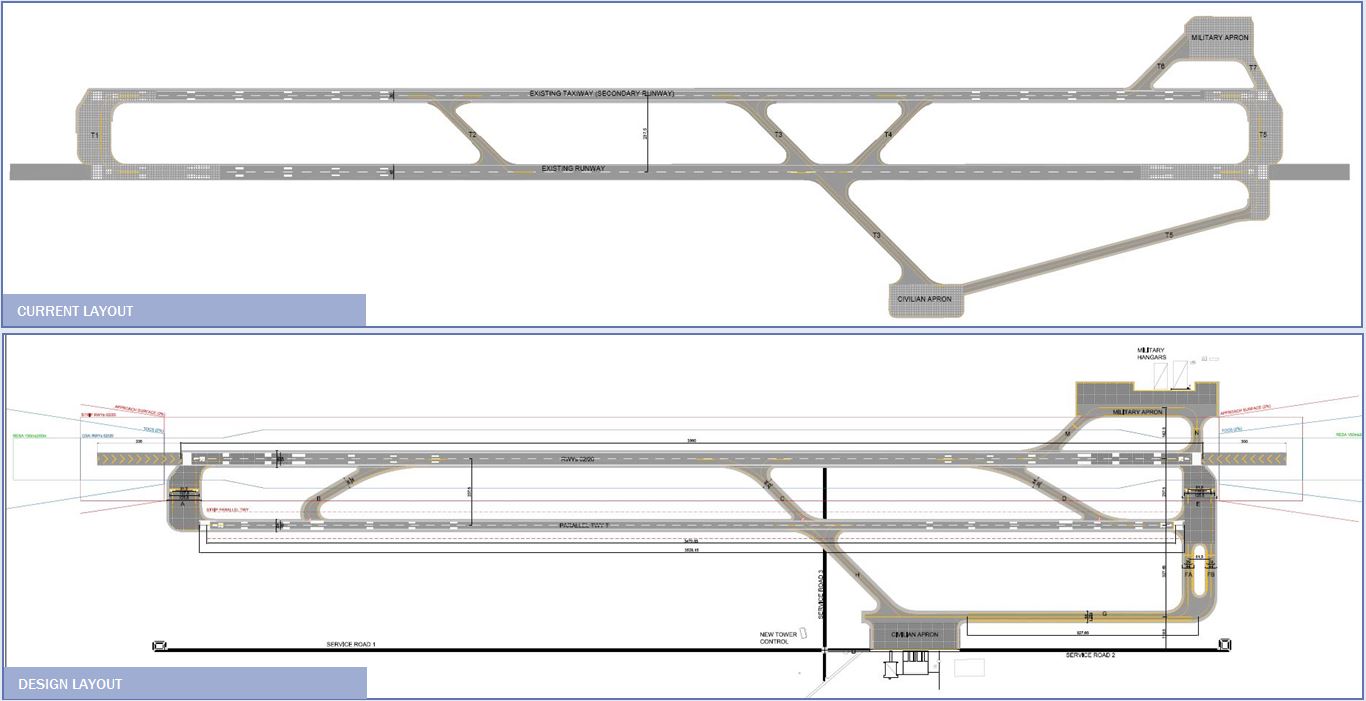Committente: Salini Impregilo S.p.A
Periodo di Svolgimento: 2014
Opera Intervento:
(Italiano) - Sviluppo e potenziamento Aeroportuale, piste e vie di rullaggio, piazzali.
- Nuovo Sistema AVL CAT I/II
Prestazioni professionali svolte:
PRELIMINARY PROJECT - PHASE 1
Importo dei lavori: € 44.800.000,00
Kufra Airport (HLKF) (Libia)

Kufra airport, ICAO code HLKF e IATA code AKF, is located at the edge of the town named Al Jawf, Kufra Province, in the south-eastern state of Libya, Cyrenaica, about 1000Km far from the capital Benghazi. ARP coordinates are: N 2410.37 ; E 2318.55
The Preliminary Design identified a framework of measures able to restore full and safe airport capacity, now compromised by the strong state of degradation in which the existing infrastructures are.
The preliminary study, identified the sequence of processing stages able to guarantee the airport capacity during the upgrading measures.
Preliminary Design project is structured in two subsequent phases:
Phase 1: geometries, runway paving, runway signals;
Phase 2: AGL equipments, hydraulic system.
By an analysis of the actual state, has been identified the framework of measures required to rehabilitate and strengthen the Kufra Airport. The measures include pavements, which, as mentioned, due to their poor condition, affect flight operations, geometry, AGL systems and hydraulics.
The first substantial modification to the existing layout, consists in the inversion of the parallel infrastructures’ function.
The current RWYs 02R/20L will become the future parallel taxiway while the existing parallel taxiway will become the future RWYs 02L/22R.
This solution is consistent with the position of the Civilian Apron that will, in the future prediction, the most used compared to the Military Apron.
oncerning pavements have been studied solutions that can guarantee adequate performances not only in terms of carrying capacity but also in terms of durability.
In order to allow the implementation of the illustrated measures without closing the airport have been identified the next 3 macro-phases of intervention. These phases will be detailed and broken down into sub-phases during the next step of the design.